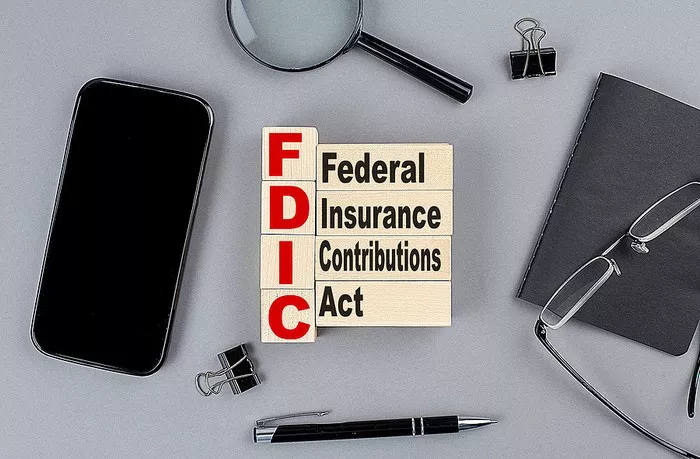The Federal Deposit Insurance Corporation (FDIC) plays a pivotal role in ensuring the stability of the U.S. banking system. Understanding FDIC insurance is essential for anyone who entrusts their money to a bank. This comprehensive guide will delve into the history, purpose, and mechanisms of FDIC insurance, providing you with the knowledge needed to make informed financial decisions.
What is FDIC Insurance?
FDIC insurance is a program established by the U.S. government to protect depositors against the loss of their funds in the event of a bank failure. It provides a safety net, ensuring that depositors have access to their funds up to the insured limit, even if their bank becomes insolvent.
History of FDIC Insurance
The need for deposit insurance became apparent during the Great Depression when numerous bank failures wiped out savings and devastated communities. In response to this crisis, President Franklin D. Roosevelt signed the Banking Act of 1933, which created the FDIC.
The Banking Act of 1933
Also known as the Glass-Steagall Act, the Banking Act of 1933 aimed to restore public confidence in the banking system. One of its key provisions was the establishment of the FDIC as an independent agency of the federal government. Its primary purpose was to insure bank deposits and promote stability in the financial system.
Early Years of FDIC Insurance
FDIC insurance initially covered deposits up to $2,500 per depositor, per bank. Over the years, the coverage limit has been raised to keep pace with inflation and changes in banking practices. Today, FDIC insurance protects deposits up to $250,000 per depositor, per bank, providing ample coverage for the vast majority of depositors.
How FDIC Insurance Works
FDIC insurance operates on a simple premise: if a bank fails, the FDIC steps in to protect depositors’ funds. When a bank fails, the FDIC typically arranges for another financial institution to assume its liabilities, including deposit accounts. Depositors’ funds are transferred to the acquiring institution, ensuring uninterrupted access to their money.
Limits of FDIC Insurance
It’s important to note that FDIC insurance has limits. The $250,000 coverage limit applies to each depositor, per bank. If you have accounts at multiple banks, each account is separately insured up to the limit. Joint accounts are also insured up to $250,000 per co-owner, providing additional coverage.
Types of Insured Deposits
FDIC insurance covers various types of deposits, including savings accounts, checking accounts, money market deposit accounts (MMDAs), and certificates of deposit (CDs). It does not cover investments such as stocks, bonds, mutual funds, or annuities.
Exclusions from FDIC Coverage
While FDIC insurance is extensive, there are some exclusions. Deposits in foreign branches of U.S. banks are not insured by the FDIC. Additionally, investments in stocks, bonds, mutual funds, and other non-deposit financial products are not covered.
Benefits of FDIC Insurance
FDIC insurance provides peace of mind to depositors, knowing that their funds are protected against bank failure. It promotes stability in the banking system by mitigating the risk of bank runs and depositor panic. This stability is crucial for maintaining confidence in the financial system and facilitating economic growth.
FDIC Insurance and Financial Stability
The FDIC’s role extends beyond deposit insurance. It also oversees and regulates thousands of banks and savings associations to ensure their safety and soundness. Through regular examinations and supervision, the FDIC works to identify and address risks within the banking system, promoting stability and resilience.
Public Confidence in the Banking System
One of the FDIC’s primary objectives is to maintain public confidence in the banking system. By providing deposit insurance and regulating banks, the FDIC instills trust and encourages individuals and businesses to deposit their money in banks rather than hoarding cash or resorting to alternative, riskier financial instruments.
The FDIC’s Response to Bank Failures
When a bank fails, the FDIC acts swiftly to minimize disruption and protect depositors’ funds. It typically arranges for another institution to assume the failed bank’s deposits and operations. This ensures that depositors can continue to access their funds without interruption.
Recovery of FDIC Insured Deposits
In the rare event of a bank failure where the FDIC is unable to find a suitable institution to assume the failed bank’s deposits, the FDIC facilitates the orderly liquidation of the bank’s assets. In such cases, depositors are typically reimbursed for their insured funds within a few days, thanks to the FDIC’s Deposit Insurance Fund (DIF).
Maintaining FDIC Insurance Coverage
To ensure that your deposits are fully protected by FDIC insurance, it’s essential to understand the coverage limits and periodically review your accounts. If you have accounts that exceed the $250,000 limit at a single bank, consider spreading your funds across multiple banks or account types to maximize your coverage.
FDIC Insurance and Digital Banking
With the rise of digital banking and online financial services, many consumers may wonder if their online accounts are covered by FDIC insurance. The answer is yes. As long as the bank is FDIC-insured, whether it operates online or through traditional branches, your deposits are protected up to the applicable limits.
Educating Yourself About FDIC Insurance
As a depositor, it’s your responsibility to educate yourself about FDIC insurance and how it protects your funds. The FDIC offers resources and tools on its website to help consumers understand their rights and coverage limits. Take advantage of these resources to make informed decisions about where to keep your money.
Conclusion
FDIC insurance is a cornerstone of the U.S. banking system, providing essential protection for depositors’ funds. By understanding how FDIC insurance works and its history, you can safeguard your savings and make informed financial choices. Remember to stay informed about FDIC coverage limits and regularly review your accounts to ensure that your deposits are fully protected. With FDIC insurance, you can deposit your money with confidence, knowing that it’s backed by the full faith and credit of the United States government.


